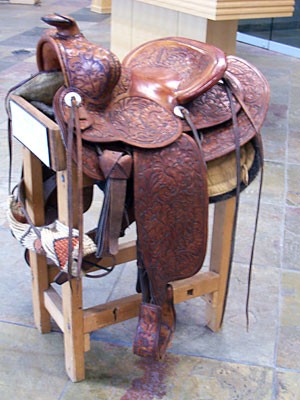Ranching is a long-forgotten way of life for many Arizonans. Rodeos are mere remnants of what once constructed the area’s economic backbone, and cowboy hats are more indicative of fashion than of an actual lifestyle.
The Empire Ranch, founded by Walter Vail in 1876, was one of Arizona’s largest cattle ranches in the late 1800s. A bevy of its artifacts – territorial maps, photographs and cowboy paraphernalia – is currently on display in the Special Collections room of the UA Main Library, 1510 E. University Blvd.
“”You’ve heard of the three Cs: copper, cotton and cattle – a lot of the time, the ‘cattle’ gets lost,”” said associate librarian Bonnie Travers.
After purchasing the homestead – about 50 miles south of Tucson – from a pair of English men, Vail and his partner John Harvey expanded the ranch over nearly one million acres, according to the Empire Ranch Foundation Web site.
“”It was an amazingly large ranch,”” Travers said.
Included in the exhibit are cases filled with 1,000-mile train tickets, business documents, and even a letter from Vail’s attorney, Selim Franklin, who brought the UA to Pima County.
A trail diary by Edward Vail documents the brothers’ cattle drive from California to Arizona, upon which they embarked as a boycott against a stiff fee raise by the Southern Pacific Railroad. As a result of the drive, the railroad company revoked its rate increase, and many other cattlemen benefitted consequently.
“”(The Vails) are an important family to emphasize,”” Travers said. Walter and his wife Margaret raised several children and grandchildren in the house, which was Victorian and equipped with all the modern amenities, before selling the ranch to the Chiricahua Cattle Co.
in 1928.
“”There’s fewer and fewer people being raised on ranches nowadays,”” she said, “”and it’s important to recall the history of that lifestyle.””
The exhibit continues through Sept. 5. Summer hours are 10 a.m. – 5 p.m. Monday through Friday.









